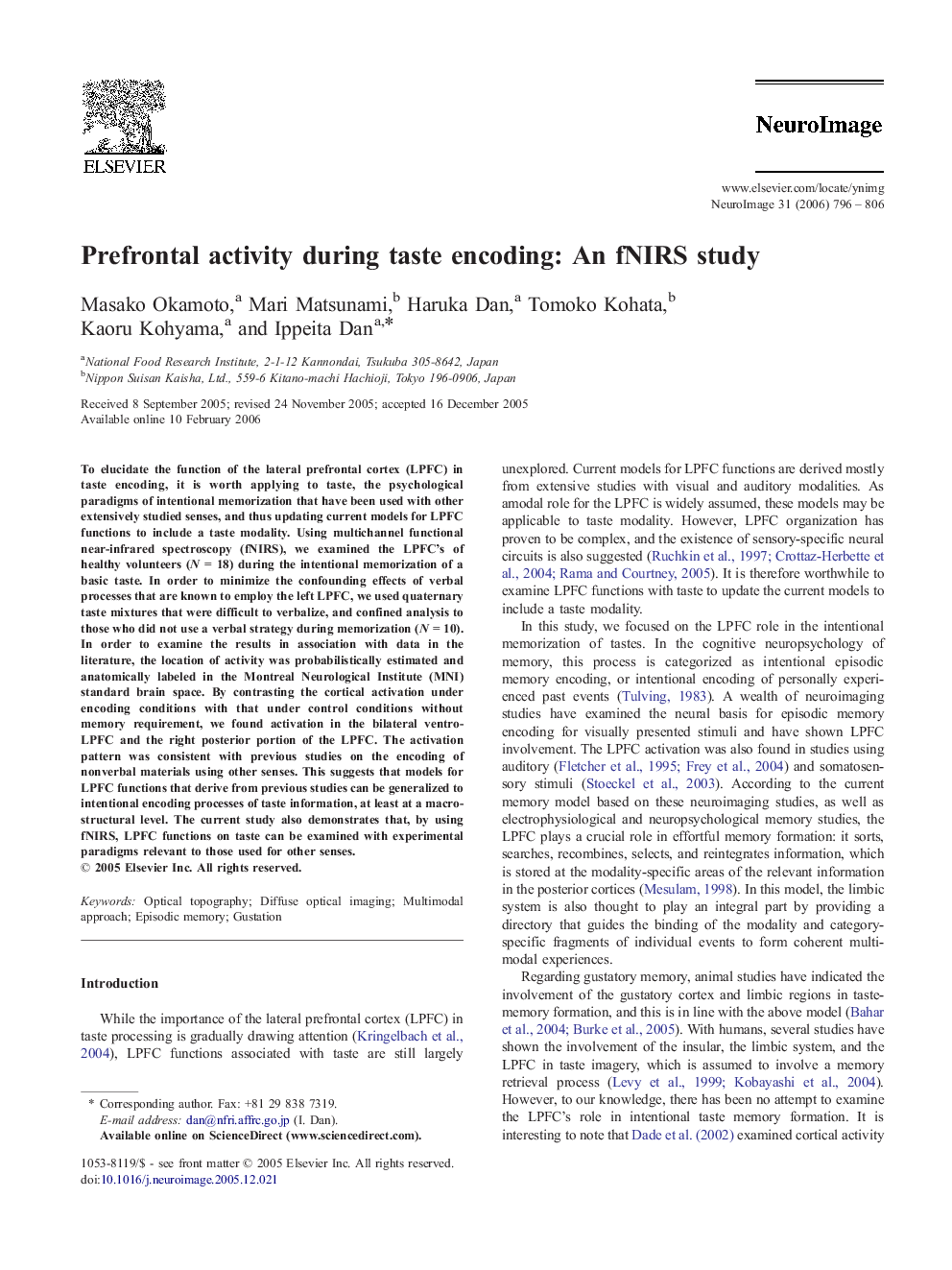| Article ID | Journal | Published Year | Pages | File Type |
|---|---|---|---|---|
| 3073749 | NeuroImage | 2006 | 11 Pages |
To elucidate the function of the lateral prefrontal cortex (LPFC) in taste encoding, it is worth applying to taste, the psychological paradigms of intentional memorization that have been used with other extensively studied senses, and thus updating current models for LPFC functions to include a taste modality. Using multichannel functional near-infrared spectroscopy (fNIRS), we examined the LPFC's of healthy volunteers (N = 18) during the intentional memorization of a basic taste. In order to minimize the confounding effects of verbal processes that are known to employ the left LPFC, we used quaternary taste mixtures that were difficult to verbalize, and confined analysis to those who did not use a verbal strategy during memorization (N = 10). In order to examine the results in association with data in the literature, the location of activity was probabilistically estimated and anatomically labeled in the Montreal Neurological Institute (MNI) standard brain space. By contrasting the cortical activation under encoding conditions with that under control conditions without memory requirement, we found activation in the bilateral ventro-LPFC and the right posterior portion of the LPFC. The activation pattern was consistent with previous studies on the encoding of nonverbal materials using other senses. This suggests that models for LPFC functions that derive from previous studies can be generalized to intentional encoding processes of taste information, at least at a macro-structural level. The current study also demonstrates that, by using fNIRS, LPFC functions on taste can be examined with experimental paradigms relevant to those used for other senses.
